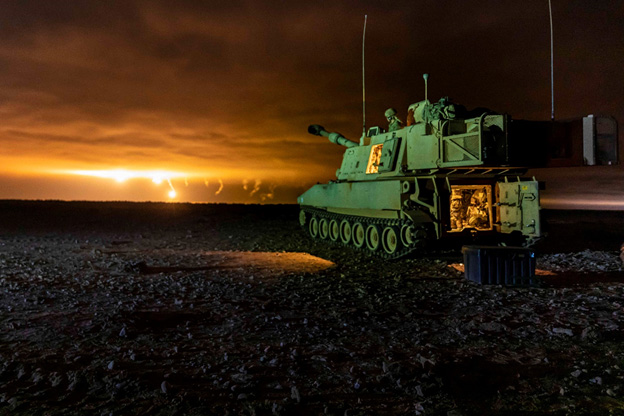Service members traveling in combat vehicles are at risk of injury from "underbody blast" (UBB) events, when an explosive device detonates underneath their vehicles. The foot, ankle, and lower leg see the most injuries from UBB events, because the significant upward force of the blast first impacts things in contact with the vehicle floor. In order to design combat vehicles that better prevent lower-limb injuries, the DOD needs to understand the amount of force transmitted to foot bones during UBB events, and how much force corresponds to injury.
To address these questions, a team1 from the Johns Hopkins University Applied Physics Laboratory studied the impacts on the calcaneus, or heel bone, during a simulated UBB event. The calcaneus is of particular interest because it is the most vulnerable to UBB events, but the least researched.1 The researchers embedded sensors in lower-limb specimens from post-mortem human subjects and used a vertical acceleration system to simulate UBB events, which facilitated data collection on the forces at which mild and severe injuries occurred. They used these data to develop an injury risk curve to enable injury prediction capabilities for computational models in an UBB environment. Injury risk curves can be used to develop higher-fidelity physical and computational models that can inform blast injury projection strategies for Service members. This work resulted in the first dedicated examination of calcaneus injuries due to UBB, as severe calcaneus injuries can lead to high infection and amputation rates.1
This study's development of specialized injury risk curves allows for an advancement of foot injury prediction accuracy and specificity, as previous research has only shown general foot-ankle injury risk curves. The prediction of calcaneus injuries can be beneficial to Service members for the reduction of future health complications and maintenance of Force fitness.

1 Voo L, Ott K, Metzger T, Merkle A, and Drewry D (2021). Severe Calcaneus Injury Probability Curves Due to Under-Body Blast. Ann Biomed Eng. doi: 10.1007/s10439-021-02768-1. Epub ahead of print. PMID: 34117584.
This work was supported by the U.S. Army Research, Development and Engineering Command (Warrior Injury Assessment Manikin Initiative).
Your 15 minute session will timeout in approximately 10 minutes.
If you're in the middle of entering information, please close this warning and save your progress (if possible) or finish up your task.
If your session fully times out, you will lose any un-saved work.
Your current Blast Injury Research Program session has expired.
Your next click will take you away from the private area, and you will lose any work you have in-progress.
Please enter your email address, and try again.